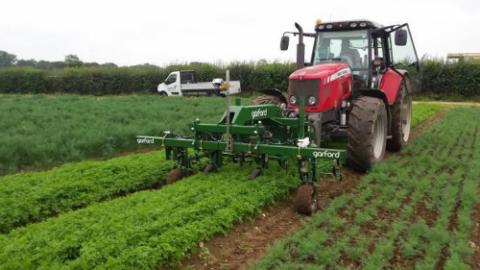An analysis of the use of a computerised robotic weeder in small scale horticultural operations
As the use of herbicides are prohibited in organically managed systems, robotic equipment could hold significant benefits in undertaking crop maintenance activities such as weeding. These weeders are commonplace in larger operations but their effectiveness, and financial viability, in small scale situations has not been analysed.
This project aimed to determine the savings in terms of labour cost and time that can be made when compared with the current methods of labour intensive hand hoeing.
Project Outcomes:
- Robotic weeding using vision-guided systems normally used in broadacre crops proved extremely effective.
- The robotic weeders tested in this project would be beneficial to small-scale horticultural growers to aid their weed control requirements, but the initial purchase cost needs to be considered carefully. See Appendix 1 in the final report which outlines the annual cost of vision guided weeders at three different price points.
- The crop rows need to be extremely straight (precision planted) to ensure there is no crop damage as the tines get very close to the crop.
- On one of the sites the grower was confident the use of the Steketee mechanical weeder should reduce the need for one of the post-emergence herbicide applications and increase overall efficacy of weed control.
- There is great potential in terms of increasing the area covered and reducing machinery cost/hectare.

